Last Updated: September 18, 2019 Anil Rana
Dynamic and diverse is how the western Indian state of Gujarat can be defined. This absolutely vivacious state is also one of the wealthiest wildlife destinations in the country. Well, we cannot forget that Gujarat is the only state in India that shelters a sizable population of the Asiatic Lions, which is a threatened species. It is a secure habitat for rare species of blackbuck and the Indian wild ass. The state is also a preferred haunt of many rare and endangered species of migratory birds. Call it a haven for wildlife, retreat for the ornithologists or paradise for the nature lovers, Gujarat is all in all an ideal place for a wildlife getaways in India.
Here is the list of national parks and wildlife sanctuaries that are a must see. Let us check out the list together:
Jambughoda Wildlife Sanctuary
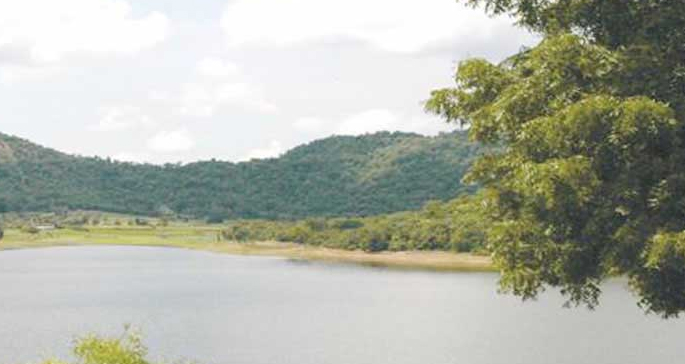
Once part of the princely state of Jambughoda, this wildlife sanctuary is now a full-fledged reserve of abundant flora and fauna. Situated in Panchmahal district of Central Gujarat, Jambughoda sanctuary covers an area of about 130 sq km (a part of which falls in Vadodra district as well). Apart from leopards, Jambughoda Wildlife Sanctuary has a fair population of hyenas, jackals, crocodiles, cobra, python, the tailor bird, the golden oriole, teals and ducks. Talking about landscape, there are two regions, one is Targol and the other Kada, which are worth noticing here. The undulating green hills and the dense forest makes Kada look absolutely stunning. Also, Kada is an ideal place to stay and camp; a large number of cottages have been constructed near the reservoir by the Forest Department.
The best time to visit Jambughoda Wildlife Sanctuary is between July and February.
Jessore Sloth Bear Sanctuary
A shelter for the endangered sloth bear, Jessore Sloth Bear Sanctuary is situated on the border of Gujarat and Rajasthan. Sprawling across the Thar Desert, with a combined area of 180 sq km, this reserve derived its name from the majestic part of Aravalli hill called Jessore. The sanctuary is home to leopards, sambars, blue bulls, wild boars, porcupines, and 105 varieties of birds that include migratory birds as well. The dry climate of the sanctuary has given way to 405 species of plants here, which are mostly thorny scrubs. Situated 25 kms from Palanpur in Banaskantha district, Jessore sanctuary is one of most picturesque places to visit in Gujarat. The ideal place to stay in Jessore Sanctuary is in the forest huts and cottages that have been made maintained by the Forest Department and are located in front of the lake surrounded by mountains.
The best time to visit Jessore Sloth Bear Sanctuary is during the monsoon but make sure you take knee length boots and raincoats to save yourself from leeches. Kedarnath Mahadev Temple and Muni Ji ki Kutia are the two attractions in the sanctuary apart from the wildlife.
Gir National Park
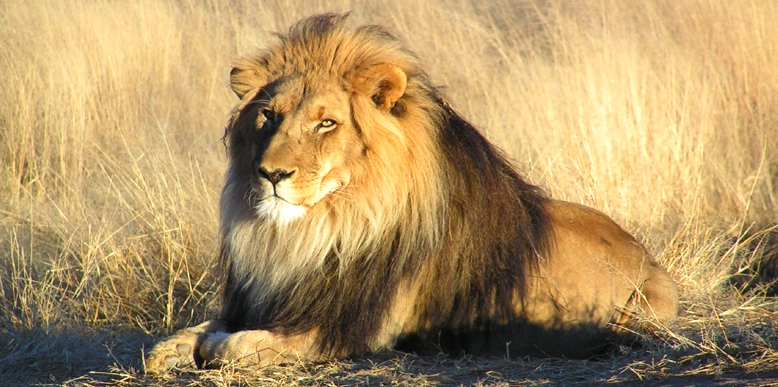
The largest abode of the Asiatic Lions in the country, Gir National Park is situated 43kms from Somnath and about 60kms from Junagadh. It is the sizable population of these lions that has made Gir one of the most popular national parks in India and has also perked up Gujarat tourism. However, if we divert our eyes from these big cats, we’ll find out that this lion sanctuary in India is also the home of ratel, rusty spotted cat, pangolin, ruddy mongoose, civets, paradise flycatchers and 300 species of birds. Gir is also one of the most beautiful national parks in the country with the distinctive landscape comprising of rugged ridges, isolated hills, plateaus and valleys.
The best time to visit Gir National Park is between December and Mid June.
Hingolgadh Nature Education Sanctuary
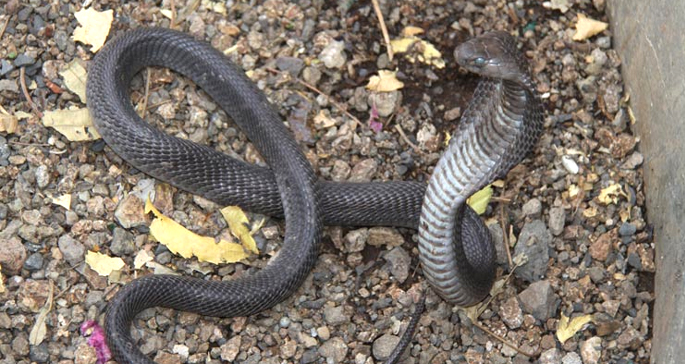
Offering many facets of wildlife in Gujarat, Hingolgadh Nature Education Sanctuary is situated in Rajkot district and is just 10kms away from Jasdan (once a princely state). It is a small yet significant sanctuary that organizes camps to create awareness about wildlife conservation. Amongst the animals found here are Chinkara, Leopard, Flying fox, Hyena and Wolf. Along with 230 species of birds, this sanctuary is also the home to about 19 species of snakes. This is an ideal place to take your children as the sanctuary offers great amount knowledge on wildlife apart from fun and excitement.
The best time to visit Hingolgadh Nature Education Sanctuary is between July and February.
Khijadiya Bird Sanctuary
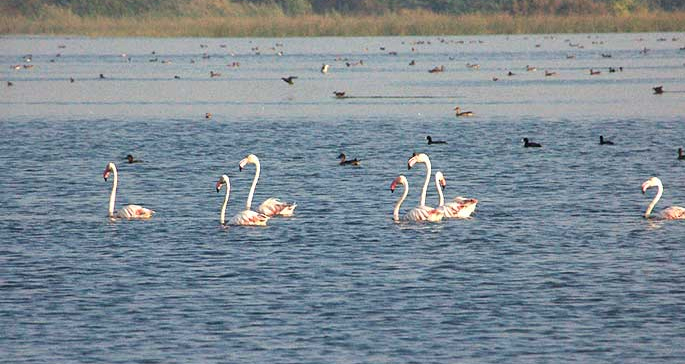
Spread over 6 sq km of area, Khijadiya is amongst the best bird sanctuaries in Gujarat. A striking number of 220 species of birds are found in this small area, which makes Khijadiya one of its kinds in India. However, this is not only the factor that marks this place unique; situated in the coastal area near Jamnagar, this sanctuary also has marine habitat, fresh water habitat, marshy lands, mangroves, prosopis areas, salt pans, open mudflats, intertidal mudflats, creeks and scrubs sandy beaches covered under its shelter. Along with birds like Pelicans, spoonbill, Indian skimmer, great crested grebe, little grebe, purple moorhen, ducks, coots, cormorants, herons, egrets, storks, ibises, gulls, terns, jacanas, darter and flamingoes, one can spot Jackal, jungle cat, blue bull, mongoose as well here.
The best time to visit Khijadiya Bird Sanctuary is between October and March.
Barda Hills Wildlife Sanctuary
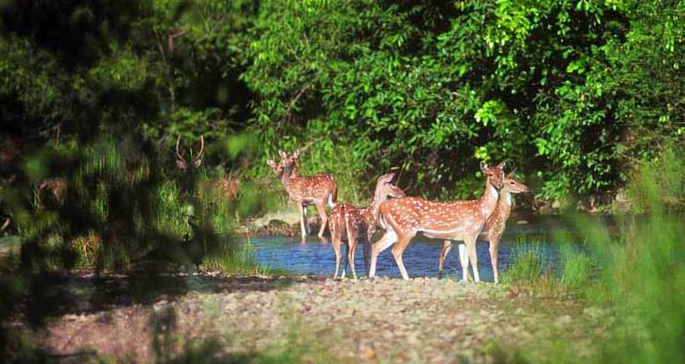
Just at a distance of about 15kms from Porbandar town in Gujarat is the Barda Hills Wildlife Sanctuary, which is well known for its dense forests and sizable amount of trees, plants and medicinal herbs. Covering an area of 192 sq km, Barda sanctuary is also a safe place for some endangered plant species that seem to have medicinal properties as well. The sanctuary is home to the rare and endangered spotted eagles, crested hawk eagle along with Leopard, hyena, wild boar, wolf, jackal, bluebull. Barda Hills is the second largest territory of the Asiatic Lions and is inhabited by ethnic races of Gujarat namely Maldharis, Bharvads, Rabaris and Gadhvis.
The best time to visit Barda Hills Wildlife Sanctuary is between November and Mid June.
Gaga Wildlife Sanctuary
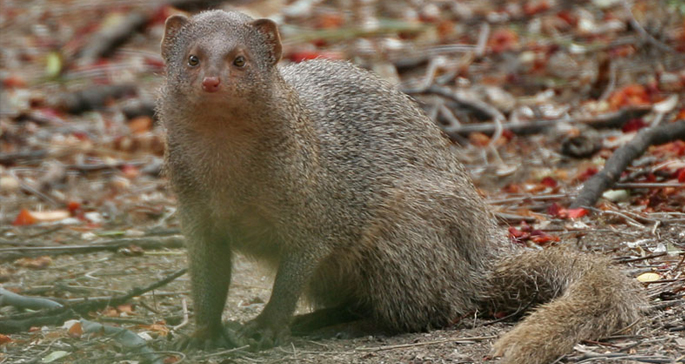
One of the smallest wildlife sanctuaries in Gujarat, Gaga Wildlife Sanctuary is nothing short of an adventure. This haven for wildlife enthusiasts is situated in Jamnagar district on the Gulf of Kutch. It is amongst the few places in India where the rare, endangered species of Houbara Bustard, Indian Wolf can be spotted. Covering about 332.87 hectares of land, Gaga sanctuary is home to12 species of mammals, 8 species of reptiles and 88 species of birds. Some of the commonly spotted animals here are wolf, jackal, mongoose, jungle cat and bluebull while birds like pelicans, spot-billed ducks, flamingoes and demoiselle cranes can also be found here. One can also find a large population of butterflies, moths, honeybee, wasps, spiders and termites in the sanctuary as well.
The best time to visit Gaga Wildlife Sanctuary is between October and March.
Mitiyala Wildlife Sanctuary
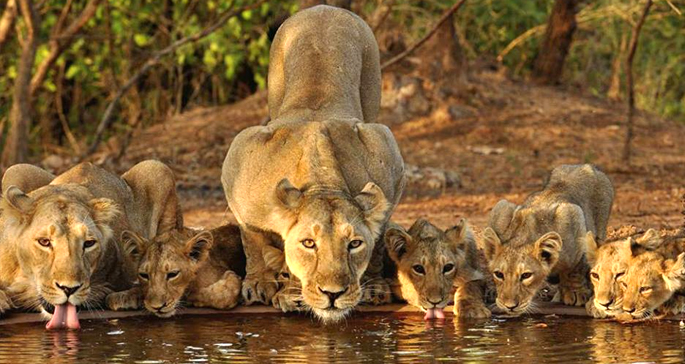
Situated at a short distance from Gir Forest National Park, Mitiyala Wildlife Sanctuary is another pride of Gujarat. Also known as Mitiyala Grasslands, this sanctuary is the hangout of the Asiatic lions that decides to walk up to the sanctuary from the nearby Gir National Park. Spotted deer, wild boars and blue bull are the other wildlife species that can be spotted in this sanctuary. Tall grasses, undulating hill tracks and semi-dry deciduous trees are the identity of this wildlife reserve.
The best time to visit Mitiyala Wildlife Sanctuary is between November and March.
Pania Wildlife Sanctuary
A vital part of the Gir National Park, Pania Wildlife Sanctuary is home to the Chinkara (Indian Gazelle). Chanchai Pania as the sanctuary is popularly called is situated at a short distance away from Amreli. Undoubtedly a picturesque area apt for eco-tourism, this sanctuary is the haven for many wildlife species like lion, hyena, leopard, wildcat, civet cat, spotted deer, chinkara, wild boar, four-horned antelope, pangolin and bluebull.
The best time to visit Pania Wildlife Sanctuary is between October and June.
Kutch Great Indian Bustard Sanctuary
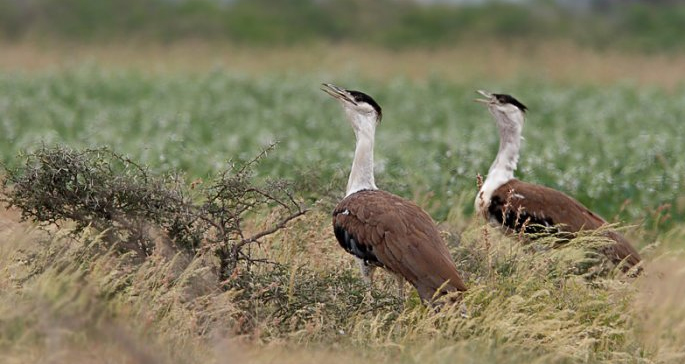
Reckoned to be one of the smallest wildlife sanctuaries in India, Kutch Great Indian Bustard Sanctuary is located in Nalia in Kutch district. As the name suggests this sanctuary conserves the Great Indian Bustard, which has an ostrich-like appearance. This sanctuary is the second largest conservator of the Indian Bustard, the largest being Desert National Park in the neighbouring state of Rajasthan. Apart from the Indian bustard/Ghorad, this reserve is home to birds like harriers, common cranes, black partridges, sand grouses, black and grey francolin and animals like wolf, desert cat, blue bull and striped hyena.
The best time to visit Kutch Great Indian Bustard Sanctuary is between August and March.
Nalsarovar Bird Sanctuary
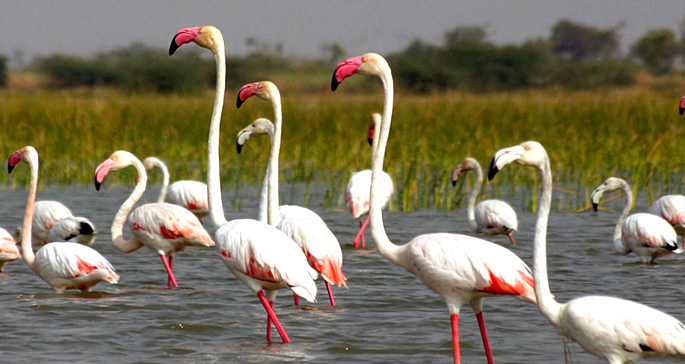
This bird sanctuary is basically a lake that is dotted with 360 islets. Situated 64kms away from Ahmedabad and near the Sanand Village, Nalsarovar is the largest wetland bird sanctuary in Gujarat. There are about 200 species of birds that inhabit the area, thus it is indeed one of the best places for birdwatching in India. This huge lake is also the safe shelter for many migratory birds that visit Nalsarovar during the winter season from Central Asia, Europe and Siberia. Greater and lesser flamingoes, pelicans, ducks & geese, rails, coots, cranes, cormorants, herons, egrets, storks, ibises, spoonbills, teals, sarus cranes, moorhens and waders can be spotted in the sanctuary also small herds of wild ass, mongoose, jungle cat, Indian fox, jackal, wolf and hyena are to be found here.
The best time to visit Nalsarovar Bird Sanctuary is between November and April.
Shoolpaneshwar Wildlife Sanctuary
Yet another safe shelter for the sloth bears in India, Shoolpaneshwar Wildlife Sanctuary is located in Narmada district in Gujarat. Marked by rugged terrain, tall canopy, verdant greenery, gorgeous valleys and gurgling streams, this wildlife sanctuary is a haven for many wildlife species in Gujarat. Sprawling across 607 sq km of area, Shoolpaneshwar is known for its thick forest cover and being a refuge for several animal species like Sloth bear, leopard, rhesus macaque, common mongoose, Indian civet cat, Indian porcupine, four-horned antelope, barking deer, chital, pangolin, flying squirrel, python, snakes, lizards and tortoise. The flora makes one of the striking features of the sanctuary as there are about 500 species of trees and plants available in this region.
The best time to visit Shoolpaneshwar Wildlife Sanctuary is between November and March.
Ratanmahal Sloth Bear Sanctuary
As the name suggests, Ratanmahal Sloth Bear Sanctuary provides shelter to a large number of Sloth Bear. The sanctuary is situated in Dahod district of Central Gujarat, which shares its boundary with Madhya Pradesh. The forest is replete with dry teak trees at the foothills and mixed deciduous with dry bamboo brakes covers the periphery. Apart from sloth bears, Ratanmahal is inhabited by leopard, striped hyena, jackal, four-horned antelope, mongoose, porcupine, civet cat, jungle cat, hanuman langur, cobra, krait, saw-scaled viper, Russel’s viper and Bamboo pit viper. Python, Rat snake, Red sand boa, Trinket are the non-venomous snakes that can be found here. Of the 147 species of birds recorded in the sanctuary, 16 are terrestrials.
The best time to visit Ratanmahal Sloth Bear Sanctuary is between October and May.
Narayan Sarovar Wildlife Sanctuary
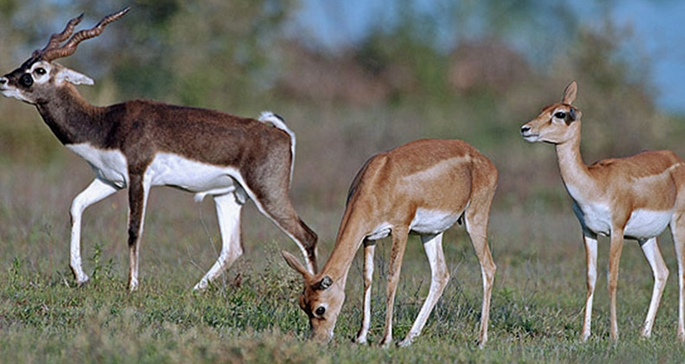
Apart from being the conservation area for many wildlife species, Narayan Sarovar Wildlife Sanctuary is a seasonal wetland amidst the arid region. The sanctuary is situated in Lakhpat taluka of Kutch district in Gujarat and is said to be one of its kinds in India. It wouldn’t be incorrect if we call it the protected home of the large Chinkara population. The grassy patches have been the perfect location for Chinkara in this area and thus it has become a haven for this Indian Gazelle species. This wildlife sanctuary is also the home to about 15 threatened species. Wolf, caracal, chinkara, desert fox, hyena, desert cat, porcupine, ratel, Indian pangolin, blue bull, mongoose and hare are some other species that are found abundantly in this wildlife reserve.
The best time to visit Narayan Sarovar Wildlife Sanctuary is between September and January.
Porbandar Bird Sanctuary
Porbandar Bird Sanctuary is the smallest bird sanctuary in Gujarat with total area coverage of about 1 sq km around a fresh water lake. This beautiful little sanctuary is situated in the heart of Porbandar town and is often visited by nature lovers and ornithologists. Along with avifauna, it is safe shelter for many migratory birds also. Flamingoes (greater and lesser), grebes, pelicans, ducks and geese, avocet, coots, cormorants, herons, egrets, bittern, storks, ibis, spoonbill, cranes, whistling teals, gulls, terns, jacanas, ruff, red shanks and Indian roller are some of the birds that you can spot in this bird sanctuary.
The best time to visit Porbandar Bird Sanctuary is between November and March.
Purna Wildlife Sanctuary
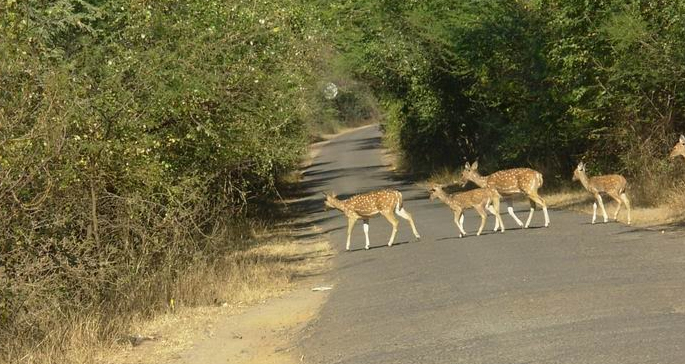
Purna is known for its dense forest cover and witnesses maximum rainfall in the region. Situated in the tribal district of Dangs, Purna Wildlife Sanctuary is known for being a safe refuge for several wildlife species in Gujarat. This wildlife sanctuary covers an area of 160 sq km and has about 700 species of plants and trees along with a generous population of animals like Leopard, rhesus macaque, bonnet macaque, common mongoose, Indian civet cat, Indian porcupine, four-horned antelope, barking deer, sambar, chital, hyena, jungle cat, flying squirrel, python and lizards. The commonly spotted birds in the sanctuary are Common grey hornbill, grey jungle fowls, barbets, woodpeckers, shrikes, cloropsis, bee-eaters, flycatchers and raptors.
The best time to visit Purna Wildlife Sanctuary is between November and March.
Rampara Wildlife Sanctuary
Marked by the wooded plain terrain, Rampara Wildlife Sanctuary is situated in Rajkot district approximately 60kms from the city of Rajkot. The wildlife sanctuary covers an area of 15sq. km, which is inhabited by about 20 species of mammals and 130 species of birds. The most common species found in the reserve are wolf, jackal, hyena, common fox, hare, jungle cat, bluebull along with about 20 different types of snakes. Amongst the birds, partridge, common peafowl, sandgrouse, ring dove, large gray babbler, purple sunbird, yellow-throated sparrow are commonly spotted here. Rampara is mainly a plain shrubby area, which is interspersed with patches of grasses and is fringed by hillocks. This comparatively smaller area is blessed with about 230 species of plants. Rampara is also a place where you can spot the largest antelopes in the country.
The best time to visit Rampara Wildlife Sanctuary is mid October and January.
Thol Lake Bird Sanctuary
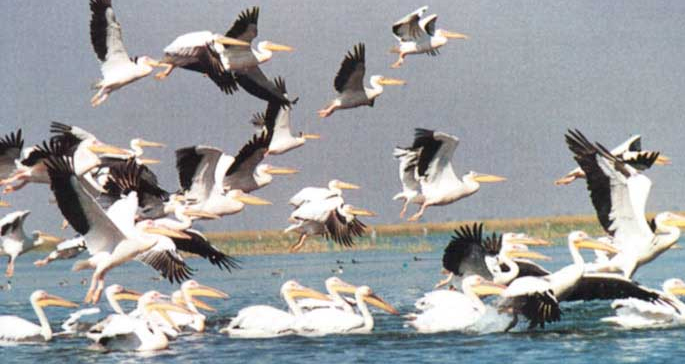
If you are looking for a quite yet beautiful getaway from Ahmedabad city, Thol Lake Bird Sanctuary is the ideal place to visit. Situated about 10kms from the main city, Thol Lake covers an area of 7 sq km. More than 100 species of birds including migratory feathery guests can be spotted in this lake; hence one can call this sanctuary a paradise for bird watchers. Cranes, flamingoes, geese, ducks, spoonbills, pelicans, whistling teals, egrets, and herons are some of the commonly spotted birds here. The freshwater lake is surrounded by marshes and is covered with thick forest on the sides. It is indeed a perfect escape from the bustling city life and for spending time amidst serene environs.
The best time to visit Thol Lake Bird Sanctuary is between November and February.
Vansda National Park
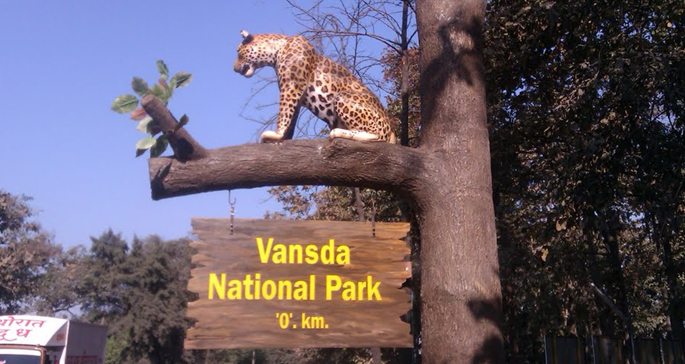
Vansda National Park is amongst the most popular wildlife reserves in Gujarat. The park is situated in Navsari district and is spread across a small area of around 23 sq km. However, do not be fooled by its small size, as Vansda is known for sheltering a large wildlife population. With River Ambika snaking through the forest and the thickets of woods make this place quite a pleasing site to see. At Vansda animals like Leopard, rhesus macaque, wild boar, hanuman langur, common palm civet, small Indian civet, Indian porcupine, four-horned antelope, barking deer, hyena, jungle cat, flying squirrel, python and Russel’s viper can be found. Also about 155 species of birds including the Indian great black woodpecker, yellow back sunbird, pompodour pigeon, malabar trogon, shama, common grey hornbill, jungle babbler and forest spotted owlet (globally threatened) can be seen here.
The best time to visit Vansda National Park is between November and March.
Velavadar Blackbuck National Park
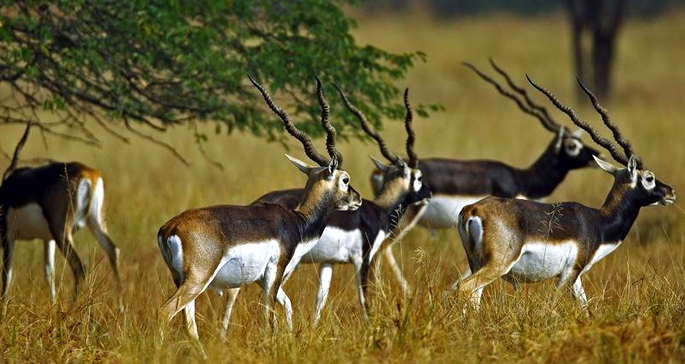
This is amongst the few places in India, where one can cite a sizable population of Blackbucks. The park is situated in the Bhavnagar district of Gujarat and is spread over an area of about 34 sq km. Vervadar is a flat grassy area, where herds of blackbucks are often seen loitering around. Apart from blackbucks, Velavadar Blackbuck National Park is the secure habitat for the endangered Indian wolf, Jackal, Indian fox, Jungle cat, Blue bull antelope, Wild pigs, Hares and Rodents. The southern part of the park is ideal for birdwatchers, while the southern border is also the favourite place of packs of wolves.
The best time to visit Veravadar Blackbuck National Park is between July and March.
Wild Ass Sanctuary – Little Rann
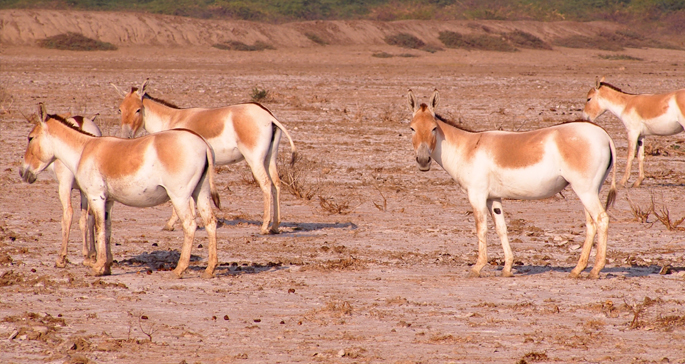
Located on what is called the Little Rann of Kutch, Wild Ass Sanctuary is the only wildlife reserve for the last Indian wild ass in India. Covering partial areas of Sundernagar, Rajkot, Patan, Banaskantha and Kutch district, it is one of the largest sanctuaries in Gujarat (5000 sq km). This region is considered as the heritage of Gujarat with the main inhabitants being the dalmatian pelican, lesser flamingo, sarus crane, caracal, desert fox and black cobra apart from the Indian wild Ass. The sanctuary is also the refuge for some threatened migratory birds like houbara bustard, dalmatian pelicans, hawks, harriers and falcons. Most of the area of the sanctuary is grassland, which is also called bait. Human habitats can also be seen here and amongst them the sizable tribe found here is that of Agarias, who work in the salt pans. It is to be noted that this wildlife sanctuary has one of the largest salt pans in India.
The best time to visit Wild Ass Sanctuary is between November and March.
Gujarat has got me thinking! It was a long list of wildlife destinations in Gujarat, wasn’t it? Well, I hope this piece of information can help you when you plan your wildlife holiday in Gujarat. I also hope that the next time you are in Gujarat, you would include one of these national parks and wildlife sanctuaries in your list of places to visit.
Published: 05 Sep, 2014
As a tour manager at TourMyIndia.com, Anil Rana has helped his clients in exploring the Indian wildlife and cultural heritage. His love for travel has imparted him immense knowledge of Indian wildlife, cultural heritage, leisure destinations. To help travellers all across the world, he loves to pen down his experiences and wisdom about cultural, wildlife and leisure travel in India.



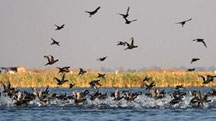 9 Nights / 10 Days
9 Nights / 10 Days 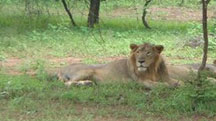 2 Nights / 3 Days
2 Nights / 3 Days 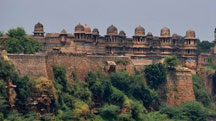 14 Nights / 15 Days
14 Nights / 15 Days 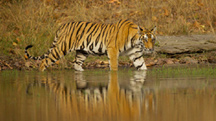 10 Nights / 11 Days
10 Nights / 11 Days 














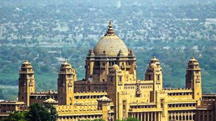 17 Nights / 18 Days
17 Nights / 18 Days 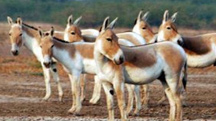 7 Nights / 8 Days
7 Nights / 8 Days  2 Nights / 3 Days
2 Nights / 3 Days 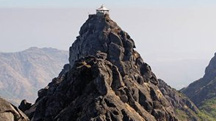 2 Nights / 3 Days
2 Nights / 3 Days 








